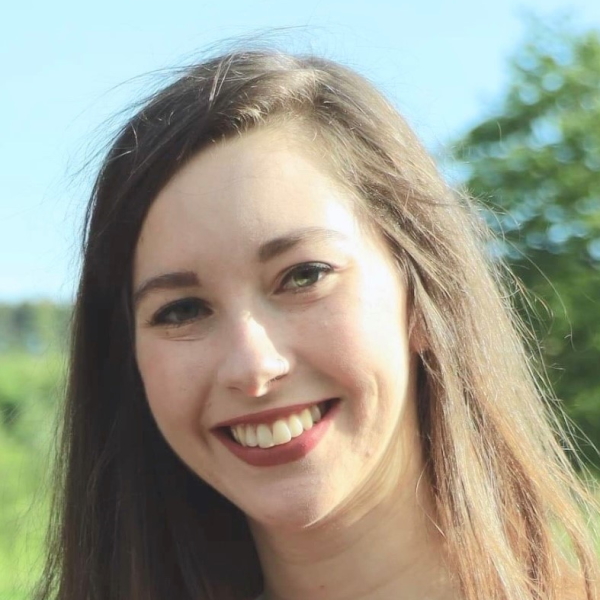Vannis Jones Rahi explores the optical experiments of Royal Society President William Hyde Wollaston, including some curious 'illusions' from our archival collections.
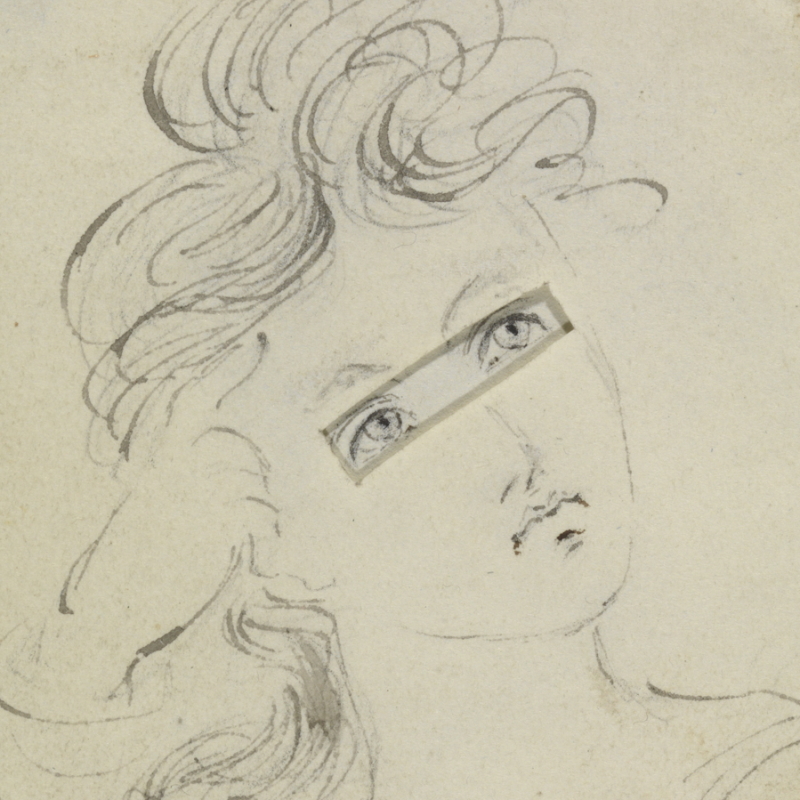
Have you ever waved back at someone who was waving to you, only to realise they were waving at a person behind you? In your ensuing state of embarrassment, have you ever considered which factors may have led your brain to deduce that this person was looking at you, rather than at someone or something else?
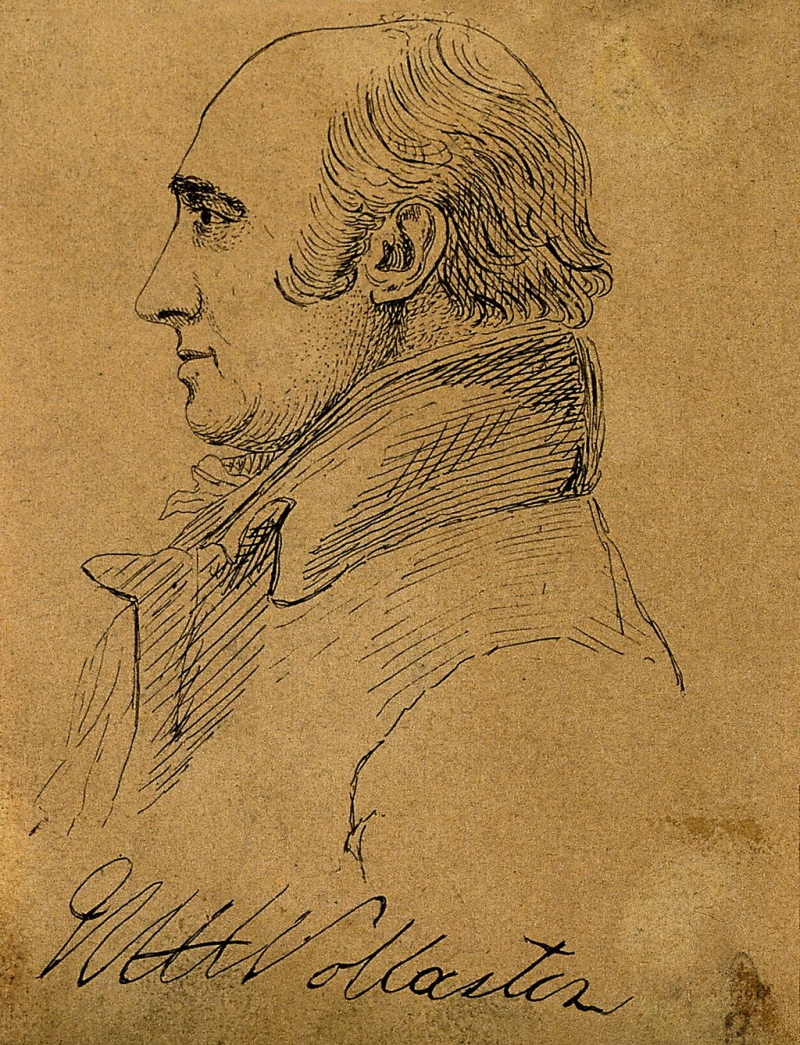 Pen drawing of William Hyde Wollaston by or after Sir Francis Leggatt Chantrey. From the Iconograph Collections, Wellcome Trust, V0006362ER. Wikimedia Commons.
Pen drawing of William Hyde Wollaston by or after Sir Francis Leggatt Chantrey. From the Iconograph Collections, Wellcome Trust, V0006362ER. Wikimedia Commons.
William Hyde Wollaston PRS was the first to explore the phenomenon of perceived gaze direction, later known as the Wollaston effect or the Wollaston illusion, in his illustrated paper ‘On the apparent direction of eyes in a portrait’ published in the Philosophical Transactions in 1824. In a nutshell, Wollaston showed that the position of a person’s head and facial features with respect to a viewer can influence the viewer’s perception of the direction of the person’s gaze. The same eye region overlaid on two different head orientations can appear to look at the viewer in one orientation, and at something beyond the viewer in another.
Wollaston’s theory has captured the curiosity of many in the last two centuries. Here’s a taster of one his ‘illusions’, taken from an unpublished illustration in our archival collections:
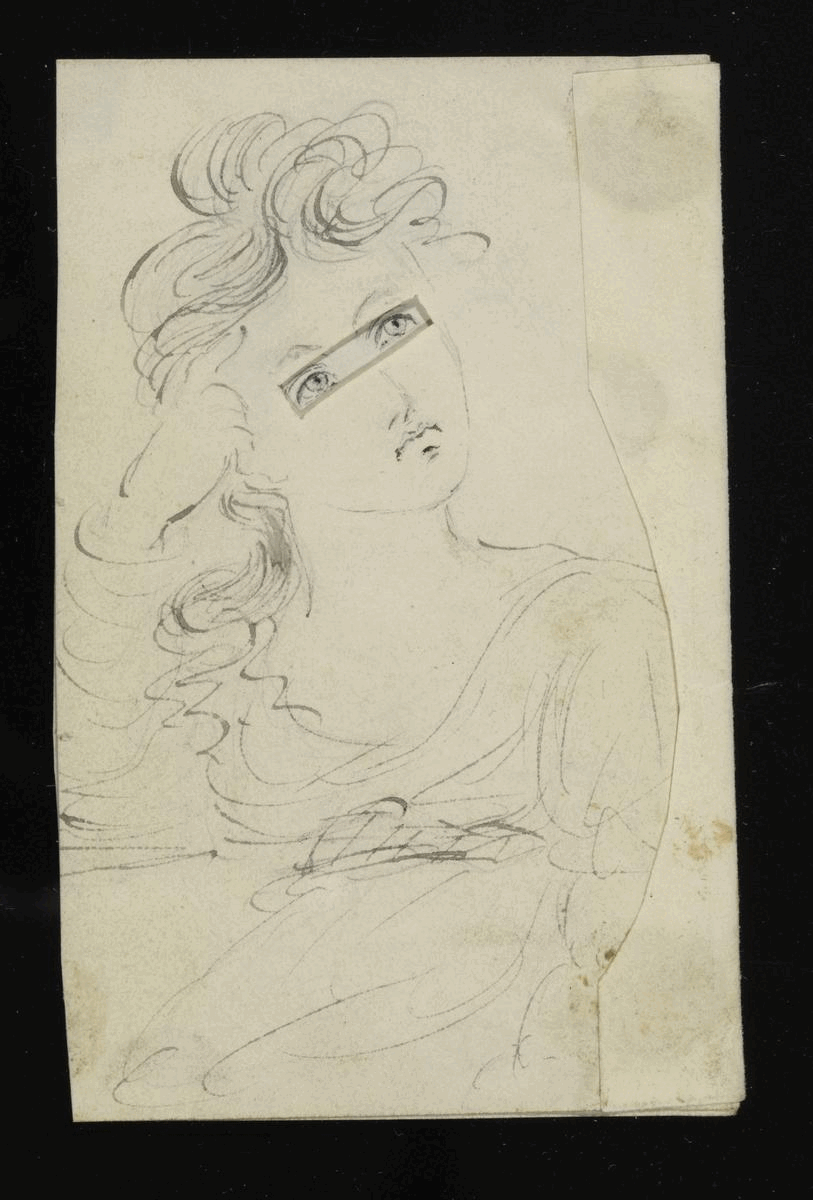 Illustration by an unknown artist from Wollaston’s paper PT/17/3/3
Illustration by an unknown artist from Wollaston’s paper PT/17/3/3
Wollaston, one of the Royal Society's shortest-serving Presidents, was a medical doctor turned chemist and physicist, perhaps best known for his discovery of the elements palladium and rhodium, as well as for his method of processing platinum ore into malleable ingots. His scientific interests, however, ranged far and wide, encompassing such diverse fields as botany, astronomy, physiology and, of course, optics.
Wollaston’s contributions to the field of optics flourished in the early nineteenth century with his invention of the camera lucida (1806), the reflecting goniometer (1809) and the meniscus lens (1812). These inventions sit at the intersection of mathematics, physics, and art – the camera lucida, for example, was an apparatus designed to aid in accurate perspective sketching of objects using a prism known as the Wollaston prism.
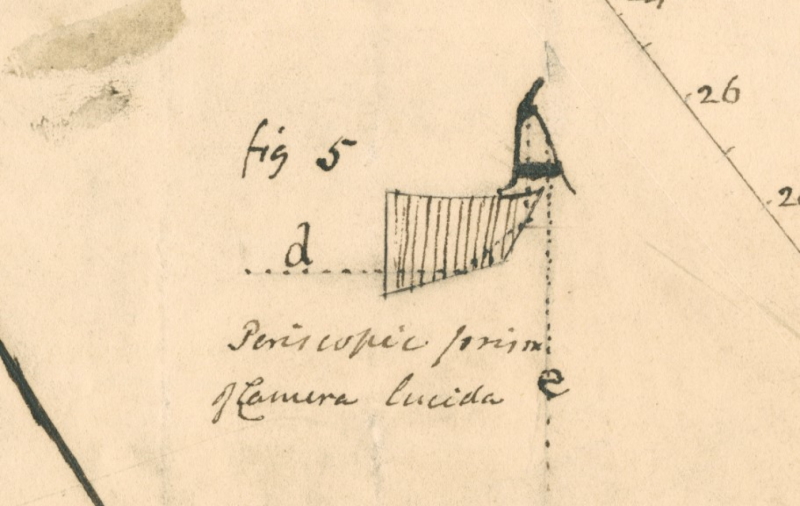 ‘Periscopic prism of camera lucida’ by William Hyde Wollaston. PT/73/3/4
‘Periscopic prism of camera lucida’ by William Hyde Wollaston. PT/73/3/4
Wollaston did concede in his 1824 paper that portraiture was perhaps not the most conventional topic for a scientific journal due to the ‘sense, and grace, and sensibility’ involved in portrait painting. However, he argued that scientific principles were integral to the subject given the mathematical rules that underpin perspective drawing. He then applied these mathematical principles to the age-old question: is that person looking at me?
Most people are unaware of the factors that enable us to determine whether someone is looking at us. Wollaston proposed that a typical assumption might be that the form of the iris could be used to determine the direction of a person’s gaze. When a person faces you and looks at you directly, their irises appear completely circular, whereas they appear somewhat elliptical when directed away from you. However, the average person is unlikely to be able to judge with significant precision the circularity of an iris. Wollaston therefore turned his attention to the sclera (white parts) of the eyes.
Wollaston argued that if a person were to look 20° to the right or left of us, we would be able to perceive this variation in their gaze due to the increase or decrease in the visible sclera at the corners of each eye. We determine that a person is looking forward when the visible portions of the sclerae are roughly equal, and we likewise use the proportions of each eye’s sclera to judge the degree of deviation from the direction of the face when the eyes are turned to the side. Or do we?
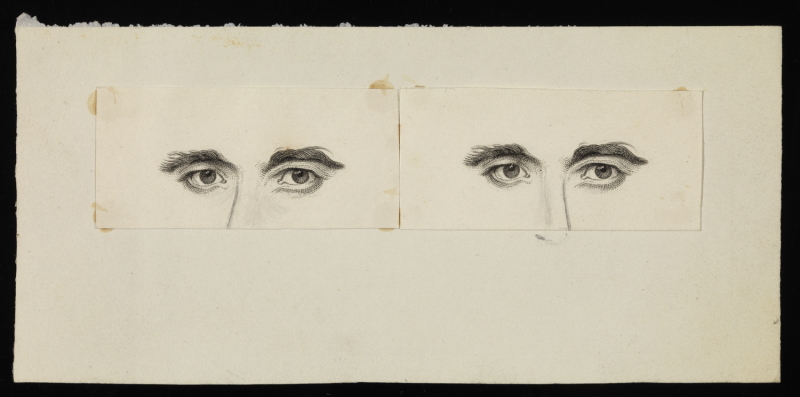 Man’s eyes with nose pointing left and right by Sir Thomas Lawrence and Mr Perkins. PT/17/3/7
Man’s eyes with nose pointing left and right by Sir Thomas Lawrence and Mr Perkins. PT/17/3/7
The above illustrations, using eyes drawn by Sir Thomas Lawrence FRS, form part of what is perhaps the best-known example of the Wollaston effect. The first set of eyes look directly at us, whilst the second set of eyes look beyond us to our right… right?
Spoiler alert: the eye region is identical in each image. The sclera proportions of the two sets of eyes are exactly the same, meaning that the position of prominent facial features – in this case, the nose – has tricked our brains into thinking that the eyes paired with a nose turned to the left, at an opposing angle to the turn of the eyes, are looking at us whilst the eyes with a nose turned to the right, at an equal angle with the turn of the eyes, are looking to the right of us. Wollaston summarised that the apparent direction of the gaze toward a viewer is determined by a balance of the position of the face in relation to the viewer and the turn of the eyes from that position. There you have it: the Wollaston effect.
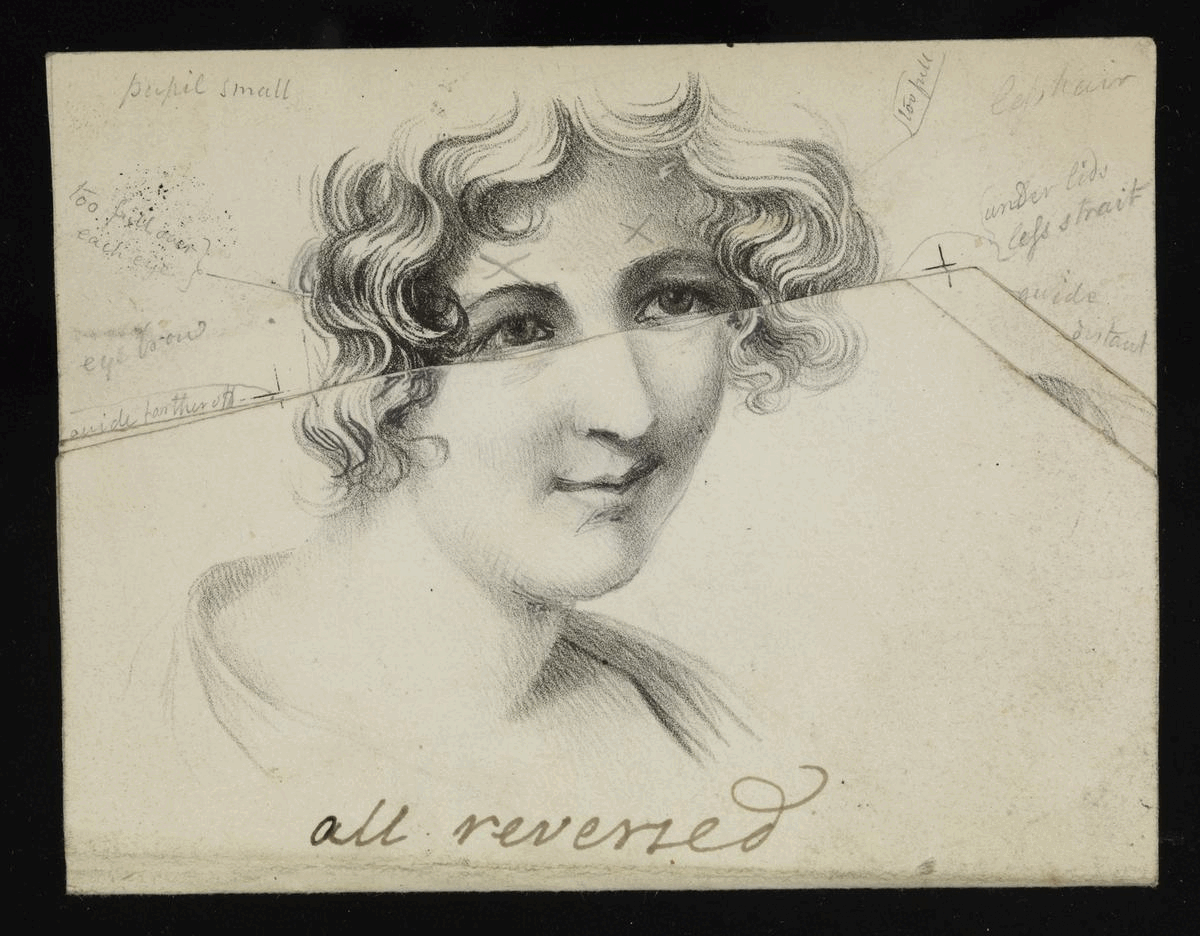 Partially unpublished illustration of a woman facing various directions by an unknown artist. PT/17/3/2
Partially unpublished illustration of a woman facing various directions by an unknown artist. PT/17/3/2
While Wollaston’s Royal Society contemporaries did not engage further with the topic of gaze perception in the Philosophical Transactions, Wollaston’s findings continue to fascinate and inspire today. In recent years, psychologists have engaged with the Wollaston effect in studies relating to gaze perception and have sought to explain the reason for this strange occurrence. Here’s a 2006 paper on the topic by Todorović if you’d like to explore the concept in detail.
More recently, a 2021 study by Hecht, Wilhelm, and von Castell showed that the Wollaston effect also works in reverse: the direction of a looker’s gaze can also affect the perceived head orientation by an observer. To test this, the researchers used a three-dimensional avatar on which head and eye orientation could be manipulated independently. Study participants were asked to estimate head orientation based on the looker’s gaze. It was found that judgements of head orientation were biased toward the direction of the eyes, likely due to the importance of gaze direction for human interaction, which trumps the relevance of head orientation.
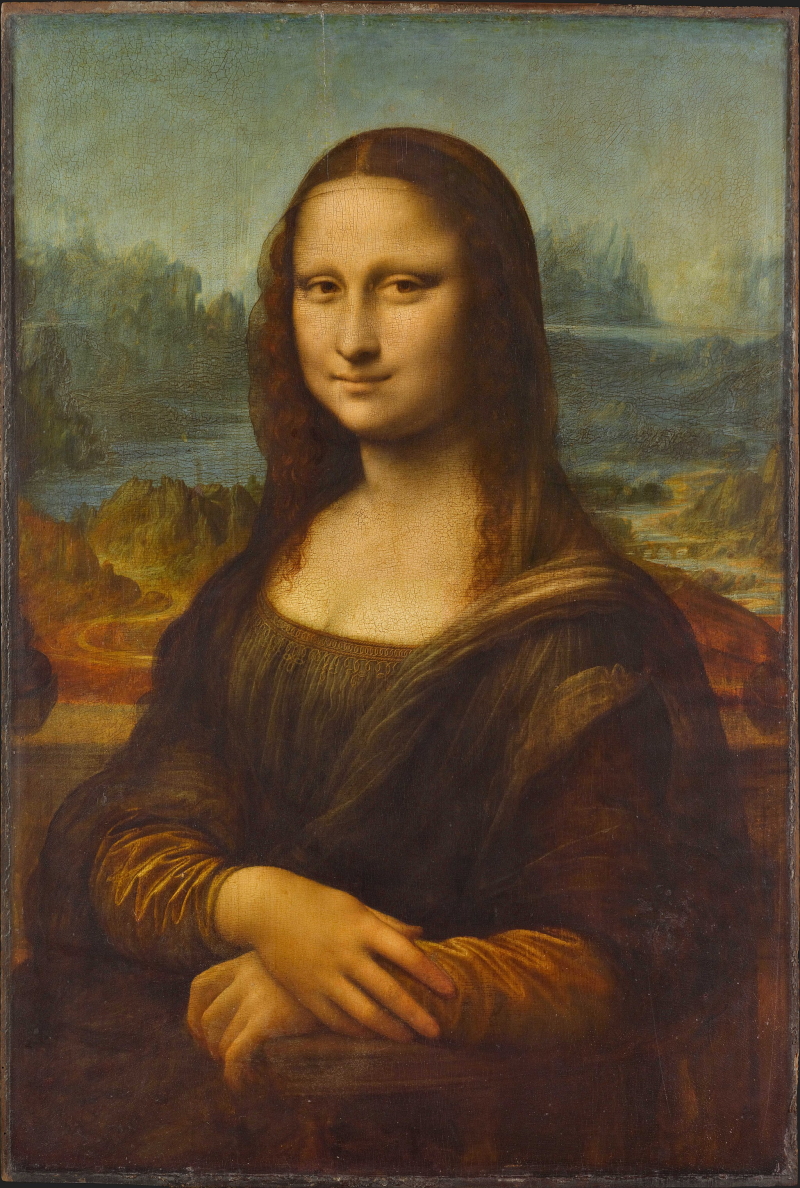 Mona Lisa by Leonardo da Vinci, between 1503 and 1516. Photographed by the Musée du Louvre, Paris. Wikimedia Commons.
Mona Lisa by Leonardo da Vinci, between 1503 and 1516. Photographed by the Musée du Louvre, Paris. Wikimedia Commons.
The last few paragraphs of Wollaston’s paper briefly address another optical phenomenon in portraiture. Have you ever felt like the subject’s eyes in a painting are following you around a room? Wollaston was by no means the first to write about this – humans have been experiencing this eerie sensation for millennia – but he provided a geometrical explanation, later known as the Mona Lisa effect. Funnily enough, researchers have recently proved that the Mona Lisa effect, whilst real, does not in fact apply to the Mona Lisa herself. She looks not at the viewer, but rather 15.4° to her left, as if she is looking toward the viewer’s right ear. A portrait that (I think) does exhibit the Mona Lisa effect, however? The one of Wollaston hanging at the Royal Society:
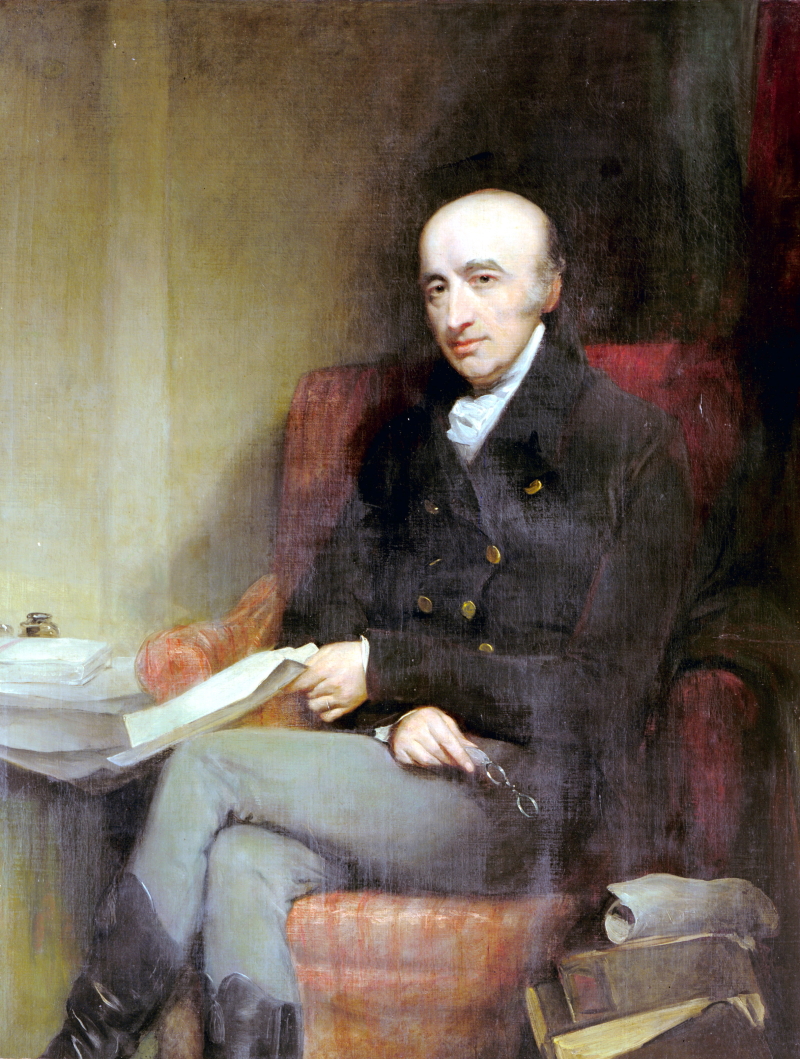 William Hyde Wollaston by John Jackson, ca. 1820-1824. RS.9754
William Hyde Wollaston by John Jackson, ca. 1820-1824. RS.9754
Wollaston’s manuscript and original illustrations form part of the Royal Society’s Science in the Making digitisation project. Keep an eye out for them on the project’s permanent online platform debuting later this year.

